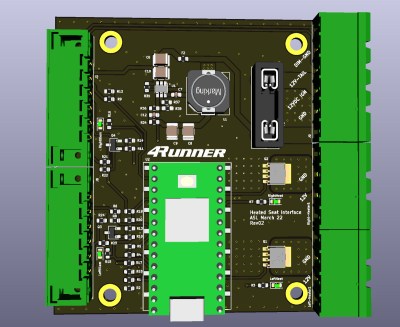The big news this week was that OpenSSH has an unauthorized Remote Code Execution exploit. Or more precisely, it had one that was fixed in 2006, that was unintentionally re-introduced in version 8.5p1 from 2021. The flaw is a signal handler race condition, where async-unsafe code gets called from within the SIGALARM handler. What does that mean?
Continue reading “This Week In Security: Hide Yo SSH, Polyfill, And Packing It Up”
Day: July 5, 2024
Toyota Heater Switches Learn New Tricks
The look, the feel, the sound — there are few things more satisfying in this world than a nice switch. If you’re putting together a device that you plan on using frequently, outfitting it with high-quality switches is one of those things that’s worth the extra cost and effort.
So we understand completely why [STR-Alorman] went to such great lengths to get the aftermarket seat heaters he purchased working with the gorgeous switches Toyota used in the 2006 4Runner. That might not sound like the kind of thing that would involve reverse engineering hardware, creating a custom PCB, or writing a bit of code to tie it all together. But of course, when working on even a halfway modern automobile, it seems nothing is ever easy.
 The process started with opening up the original Toyota switches and figuring out how they work. The six-pin units have a lot going on internally, with a toggle, a rheostat, and multiple lights packed into each one. Toyota has some pretty good documentation, but it still took some practical testing to distill it down into something a bit more manageable. The resulting KiCad symbol for the switch helps explain what’s happening inside, and [STR-Alorman] has provided a chart that attributes each detent on the knob with the measured resistance.
The process started with opening up the original Toyota switches and figuring out how they work. The six-pin units have a lot going on internally, with a toggle, a rheostat, and multiple lights packed into each one. Toyota has some pretty good documentation, but it still took some practical testing to distill it down into something a bit more manageable. The resulting KiCad symbol for the switch helps explain what’s happening inside, and [STR-Alorman] has provided a chart that attributes each detent on the knob with the measured resistance.
But understanding how the switches worked was only half the battle. The aftermarket seat heaters were only designed to work with simple toggles, so [STR-Alorman] had to develop a controller that could interface with the Toyota switches and convince the heaters to produce the desired result. The custom PCB hosts a Teensy 3.2 that reads the information from both the left and right seat switches, and uses that to control a pair of beefy MOSFETs. An interesting note here is the use of very slow pulse-width modulation (PWM) used to flip the state of the MOSFET due to the thermal inertia of the heater modules.
We love the effort [STR-Alorman] put into documenting this project, going as far as providing the Toyota part numbers for the switches and the appropriate center-console panel with the appropriate openings to accept them. It’s an excellent resource if you happen to own a 4Runner from this era, and a fascinating read for the rest of us.
How To Turn Cheap Speakers Into Something A Little Better
[Adam Francis] bought some cheap speaker drivers from AliExpress. Are they any good? Difficult to tell without a set of enclosures for them, so he made a set of transmission line cabinets. The resulting video proves that a decent sounding set of speakers shouldn’t have to cost the earth, and is quite entertaining to watch.
The design he’s going for is a transmission line, in effect a folded half-wave resonant tube terminated at one end and open at the other, with the speaker close to half way along. There is a lot of nuance to perfecting a speaker cabinet, but this basic recipe doesn’t have to be optimum to give a good result.
So after having some MDF cut to shape and glueing it all together, he ends up with some semi decent speakers for not a lot of money. The video is entertaining, with plenty of Britishisms, but the underlying project is sound. We’d have a pair on our bench.
Continue reading “How To Turn Cheap Speakers Into Something A Little Better”












